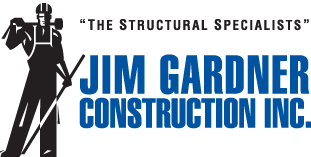The Foundation
Many of the older homes in our area have foundations that are in poor condition. But this is not merely a function of the age of the concrete. Since most of the foundations were installed without drainage systems moisture in the ground adjacent to them, whether from rainwater or subterranean water sources, is causing them to deteriorate. Concrete becomes porous over time, and the water will saturate the interior of the concrete and cause it to break down.
Water in the soil adjacent to and under the foundation, in conjunction with the expansive clay soils present on most of our properties, will cause the foundation to move as the soil shrinks and expands between wet and dry periods. Since older concrete is generally unreinforced it can settle unevenly causing it to crack, allowing more water to enter causing settlement. This often appears as cracks in walls, ceilings, and around doors and windows, along with sloping floors. Installing proper drainage will help alleviate these types of problems.
Exterior Walls
In older homes the stucco was often brought all the way to the ground. Since there are boards behind the stucco that were in contact with the soil, this gives termites access from the ground. When the paint and caulking are not maintained water can get in around doors and windows, leading to dryrot. Poor flashing details around porches, decks and roofs and leaking gutters and downspouts can allow water into the building as well, and termites love warm moist spaces. Foundations should always be at least 6”-8” above the soil level to prevent termites from entering at the base of the exterior walls.
Foundations that are in poor condition should be replaced with taller, steel-reinforced footings. For foundations in better shape, concrete termite curbs can be installed at the outside of the building to create this clearance, and they are a more reasonable alternative to replacement. Painting and caulking should be properly maintained and trim should be repaired or replaced if damaged. Gutters and downspouts should be repaired if they are leaking, and they should be properly sloped to drain properly, flashed and kept clean to make sure they don’t leak into the exterior walls.
Interior Damage
When your foundations move for the reasons described above, this can lead to cracking and settlement on the interior walls and ceilings, doors and windows that stick or won’t close, etc. Sloping floors reflect foundation settlement or damage. By correcting the moisture problems first the interior damage should be minimized, at which point it will be appropriate to undertake repairs.
In summary, water is often the main factor leading to a large variety of structural repairs. Soil problems, earthquakes, and poor construction- these can also cause damage, but they are less common. Water is a subtle culprit that affects many older homes over an extended time frame, increasing with the age of the homes foundation. The sooner the maintenance issues can be corrected, the less they will affect the structure as a whole and the lower the ultimate cost of repairs will be.



